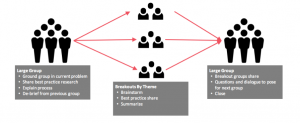SEO Metrics You Should Be Tracking But Probably Aren’t
by
Hamlet Batista , Op-Ed Contributor, February 7, 2018Determining your SEO success means more than just tracking Google page rankings.
Marketers and their customers have one thing in common: their eyes are on the first page of Google search results.
With various estimates putting the click-through rate of a number one Google ranking around 20.5%, it’s no wonder that more than half of marketers say improving SEO and growing their organic presence is their
top inbound marketing priority.But they might be surprised to learn that making it to the number one spot isn’t enough to ensure valuable clicks — or any clicks at all, for that matter. And focusing solely on improving page rankings ignores the pages that don’t rank in the first place. For ecommerce sites in particular, which spend up to a quarter of their budgets on SEO, technical SEO issues often prevent pages from appearing in search results and therefore, from earning ROI.
Does that mean that keyword rankings are not important? Absolutely not! It means that focusing only on keyword rankings is a terrible mistake. So in addition to measuring SEO success based on page rankings, here are some other metrics that companies might not be tracking, but should be.
Drivers: Revenue and Traffic
Everyone knows revenue is important. What they might not know, however, is that they can track the revenue that corresponds to their SEO efforts. By
connecting Google Search Console with Google Analytics, companies can access data about the revenue listed for the organic search channel, up to the page level. Tracking this data is a great place to start, as it gives companies a better idea of how much revenue their SEO efforts are actually generating.In addition to traffic and revenue, companies can use Google Search Console inside Google Analytics to track behavioral metrics like number of pages visited, bounce rate and time onsite. Coupled with the data provided about conversion rates, these metrics can help companies understand which pages are performing the best and why, and use that insight to optimize existing content — or create new content.
Comparing this data over time is a great way to measure the evolution of a company’s SEO success. Rather than simply monitoring Google page rankings, measuring changes in a company’s page revenue and traffic can provide more meaningful insights that rankings don’t capture. Sometimes pages are ranked high, but receive very few clicks. Other times, pages receive many clicks, but have low conversion rates. Fundamental drivers such as revenue and traffic, therefore, are stronger metrics to study.
Obstacles: Indexing Errors
Still, these driver metrics don’t paint the full picture. It’s equally important to know where an SEO strategy isn’t working. And there is no better place to start than by looking at crawl errors. These errors are often what prevent companies’ pages from being indexed by Google in the first place — meaning that unless they are fixed, the pages will generate zero organic traffic, and zero revenue from organic search too. For this reason, we always recommend starting with a
foundational SEO approach that focuses on correctly indexing existing content before pouring resources into new content.Companies can find pages with indexing and crawl errors by using the Google Search Console. Typically, the number of crawl errors is far different between the web version and mobile version of a company’s web pages. Considering that for some industries up to nearly
three-quarters of searches come from a mobile device, companies should pay particular attention to their mobile crawl errors and take steps to fix them immediately.Once the necessary changes are made, companies should also view the total number of pages crawled per day and the Index Status from Google Search Console to ensure that all of their pages will eventually be searchable.
Levers: Optimized Pages and Visitors Per Page
Driver metrics help companies measure progress against goals, and obstacles provide them with specific actions to take. However, they still need to keep an eye on metrics that affect them directly.
In order to properly gauge whether the implemented changes have had a positive effect, companies can monitor two primary “levers” that would point to inevitable traffic and revenue increases: the number of optimized pages (landing pages that rank and drive traffic), and the average number of visitors per page. When these two metrics are multiplied together, companies can see the total SEO traffic to their sites.
To find the number of optimized pages, under organic search traffic, switch from keywords to pages and count the number listed at the bottom paginator. Companies with sites under 50k pages should aim for about 50% to 75% of the total site pages to be receiving traffic; however, this level can (and should) increase with additional SEO improvements, as they are ultimately those which drive the most revenue and return on a company’s SEO investments. How can a company get more pages optimized? An example would be by getting more pages effectively indexed.
To determine whether or not a company is meeting its goals, the second key metric to monitor is the average number of visitors per page, which can be calculated by dividing the total traffic figure by the number of optimized pages. Rather than the blindsided approach of relying only on page rankings to determine SEO success, this approach can help companies more accurately gauge their SEO improvements. After all, high-ranking pages don’t always lead to valuable results.
While these two final metrics are by far the most important, they still work in tandem with the driver and obstacle metrics. By tracking each of these metrics together, companies can ultimately save time and money by leveraging their existing content. And by not shelling out for more mediocre keyword content, they can clean up the internet too.
MediaPost.com: Search Marketing Daily
(48)




